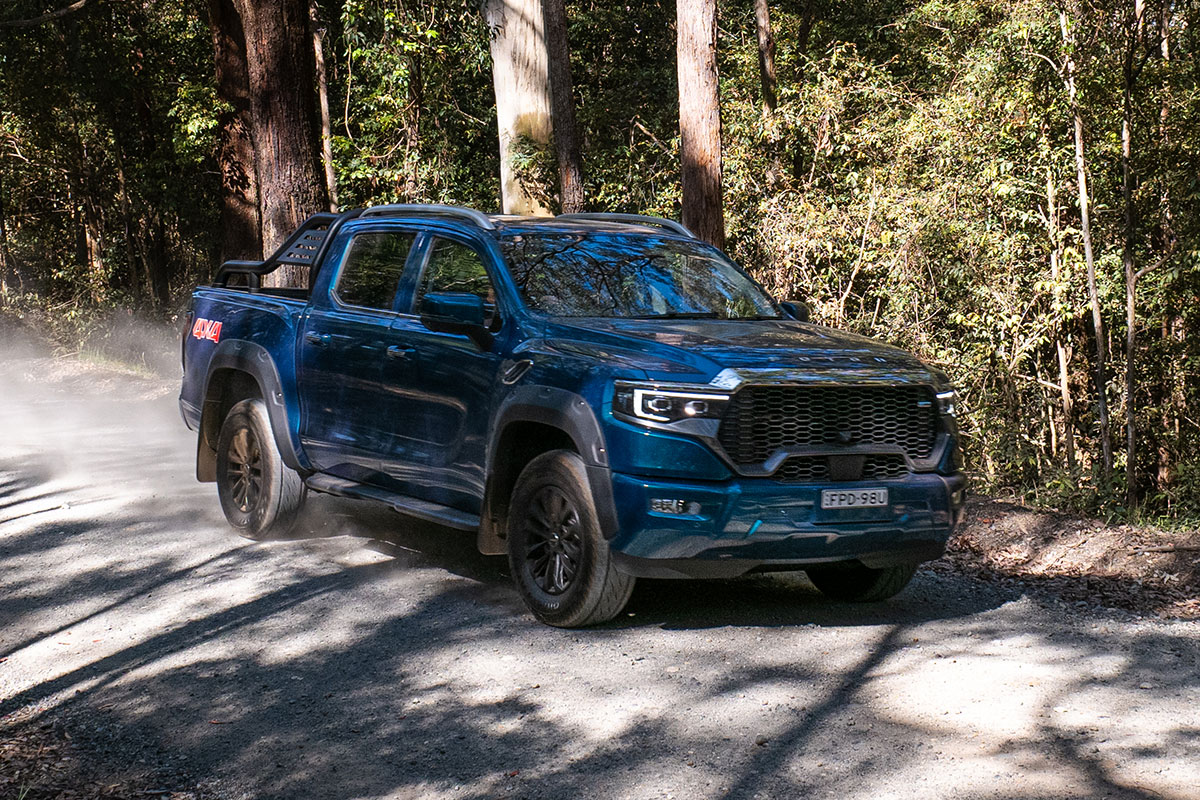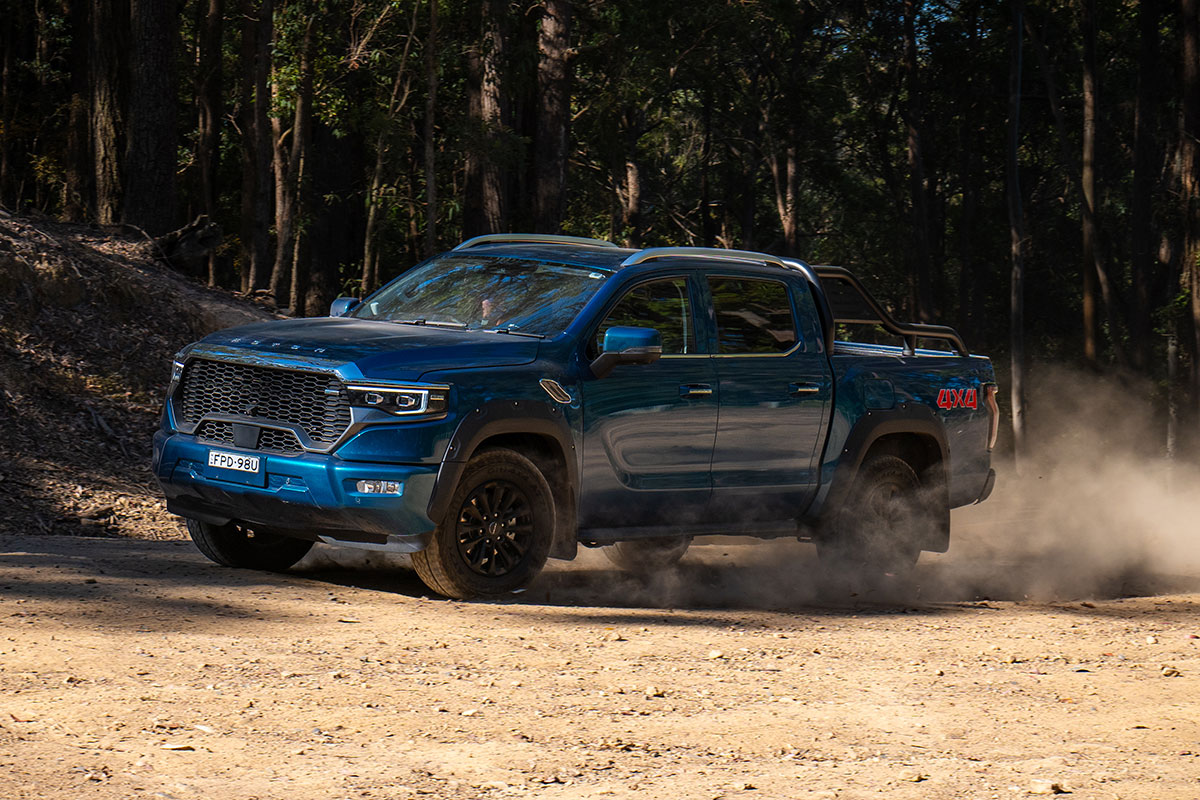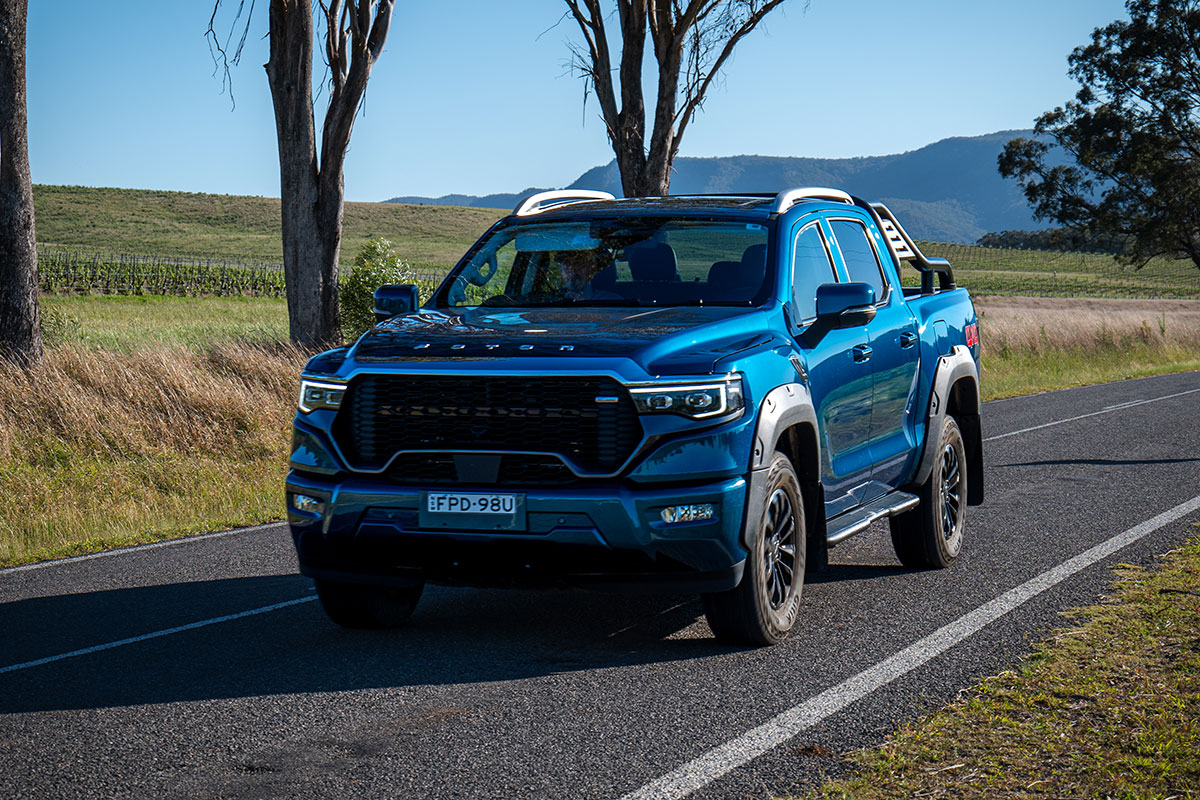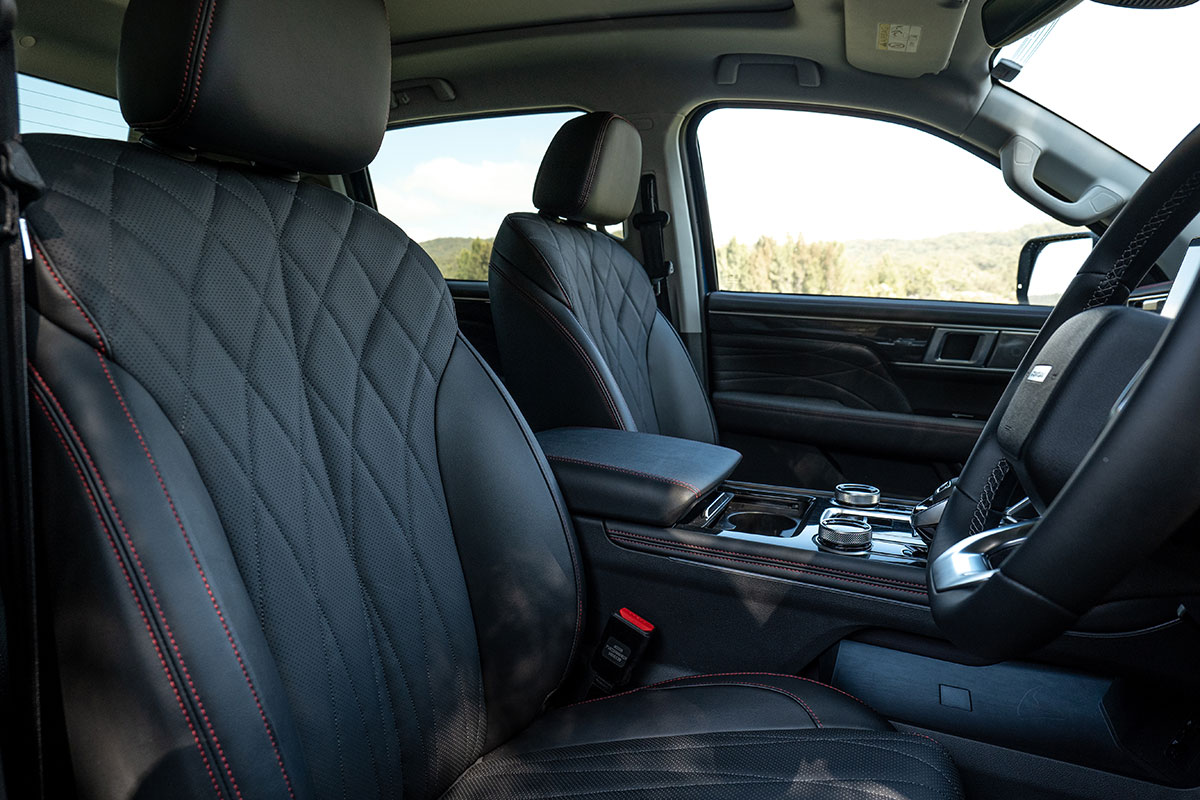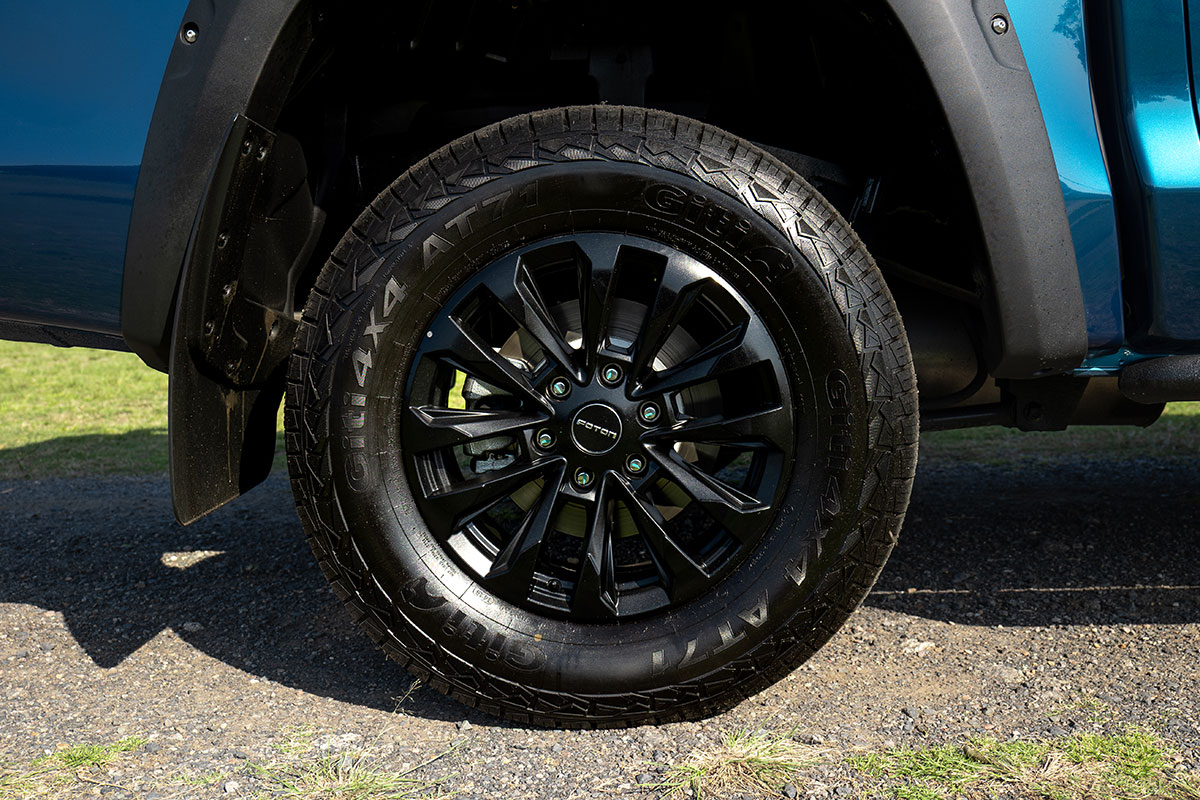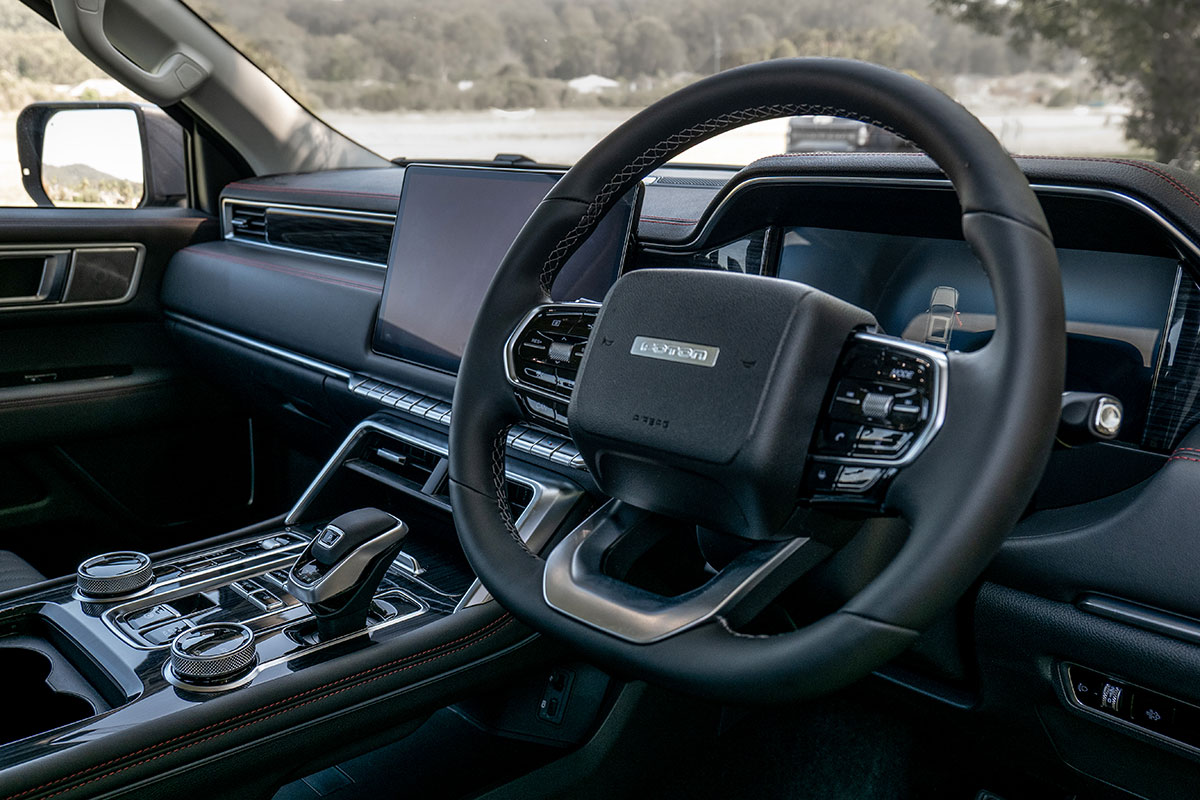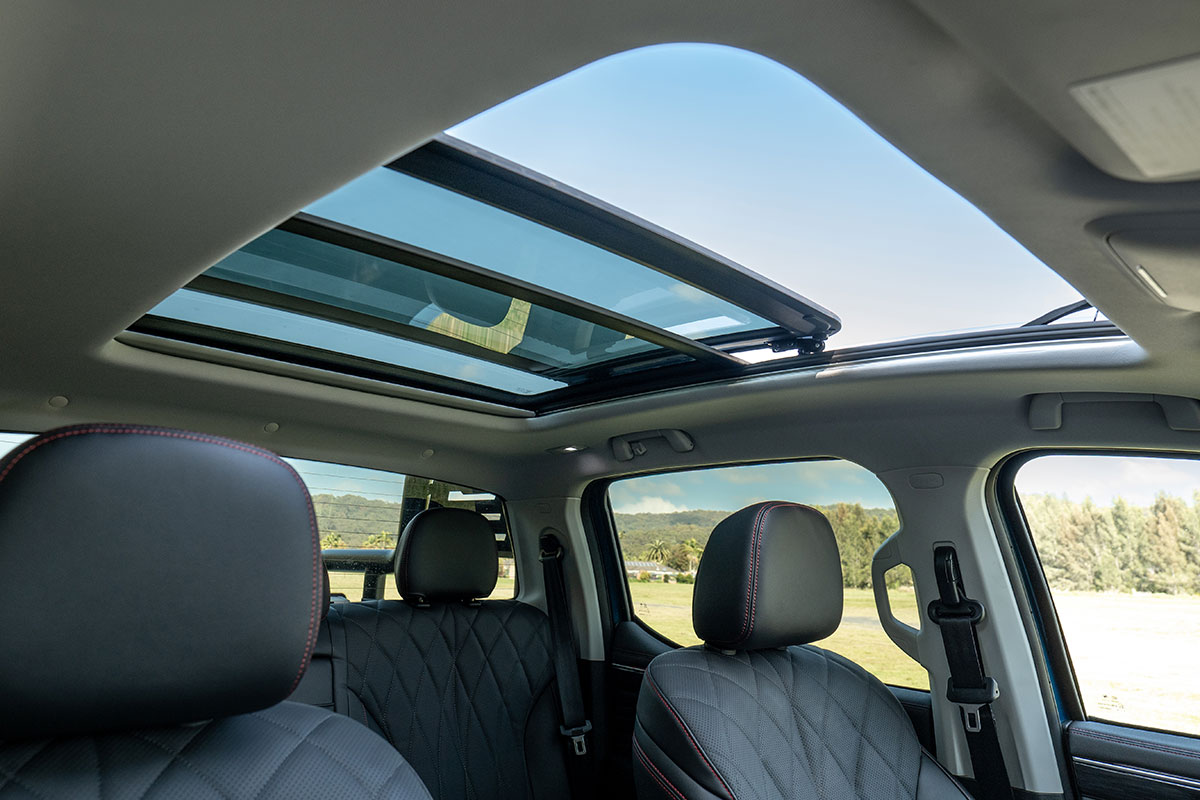
— Byron Mathioudakis
If the name Foton Tunland sounds familiar, it’s because the Chinese brand tried, but failed, to break into the Australian ute market during the 2010s.
Let’s not mince words. That Tunland was a cheap, basic workhorse with a low price being its sole attraction.
Now Foton has returned – thanks to Subaru importer Inchcape – with a new Tunland, and is seeking to take on the GWM Cannon, Isuzu D-Max, LDV Terron 9 and other affordable dual-cab utes.
And, as their shamelessly familiar faces (yes, there are two distinct versions) suggest, things are different this time around. Let’s dive in a little deeper.
The Tunland range opens with the V7-C (for Core) 4x2 from $39,990 (all prices are before on-road costs), and it is instantly recognisable by its Ford F-150-like front-end styling. Aimed at government and fleet buyers, this is the workhorse grade, with a handy payload capacity (up to 1115kg) thanks to tough leaf-spring rear suspension. A 4x4 part-time four-wheel drive option costs $3000 more.
Next up is the Tunland V9-L (for Luxury) 4x4 from $45,990. This one adopts a very Ram 1500-inspired nose cone and plastic wheel-arch moulds, while the rear suspension changes to a coil-sprung multi-link design to maximise comfort (and reduce payload a little). Otherwise, it’s basically the same ute.
Finally, there’s the V9-S (for Supreme) 4x4 flagship, kicking off from $49,990 with a few extra luxuries. Cab-chassis and other body styles may surface later on.
All grades come with a seven-year warranty, roadside assistance and capped-price servicing, as well as 3500kg braked towing capacity.
A bit larger in every way, today’s Tunland is also notably longer than traditional medium-sized dual-cab utes, at nearly halfway between the Ford Ranger and F-150. And that’s immediately evident inside.
Suspend all preconceptions, because the Tunland’s interior packaging and presentation elevate the Foton considerably.
Large doors reveal a broad cabin with ample space to stretch, on soft yet supportive front seats, a fine driving position, controls that are within easy reach, effective ventilation and, most unexpectedly given the price point, decent fit and material finish… for the most part.
It almost forgives the electronic instrumentation display that, in one mode, flagrantly rips off Mercedes-Benz circa-2013.
Clean and minimalist, the dash itself could be from any modern Chinese vehicle nowadays, dominated by a large landscape touchscreen housing the usual multimedia, communication, climate control and vehicle-settings functions.
While a row of piano-key buttons below and clearly-marked shortcut symbols displayed within improve the user experience, multiple prods of the screen were required in every vehicle tested, which proved frustrating and distracting.
So was the persistent squeaking from the door/window rubbers and trim in every V7-C we drove, even when merely cornering, suggesting body flexing. Could it be the leaf springs, since the V9s seemed immune to these squeaks?
The rear seat also benefits from the Foton’s generous dimensions, with the bench providing adequate comfort aided by a (slightly) reclining backrest, centre armrest with cupholders and air vents. Unlike up front, storage is meagre, with only scant under-cushion space below.
Further back, the Tunland’s tub easily eclipses a Ranger’s, at nearly 1580mm long by 1650mm wide and 530mm high (versus 1460 x 1520 x 525mm), will take a standard Euro palette, has tailgate lift-assistance (but isn’t lockable on the V7-C, sadly) and a spray-in liner.
Aftermarket suppliers will sell accessories such as a canopy, bullbar, extra lighting and tow bars, with Foton endorsing the Ironman company.
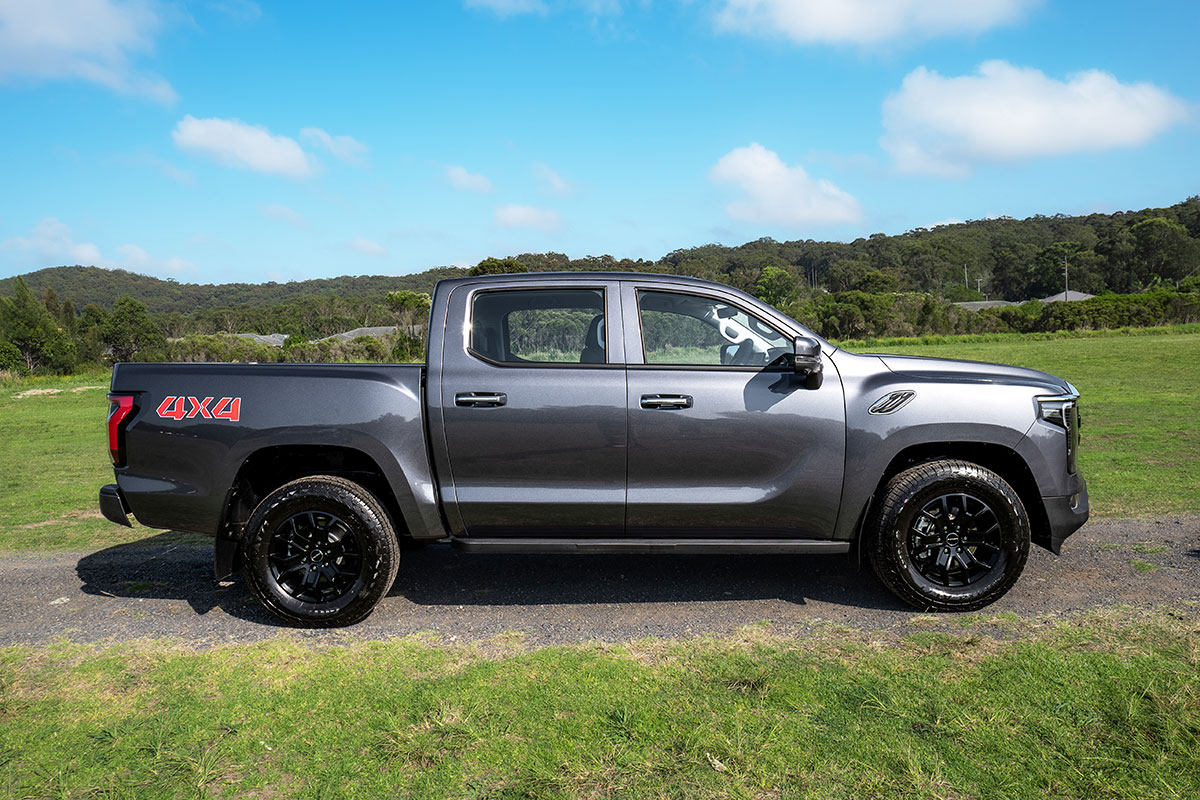
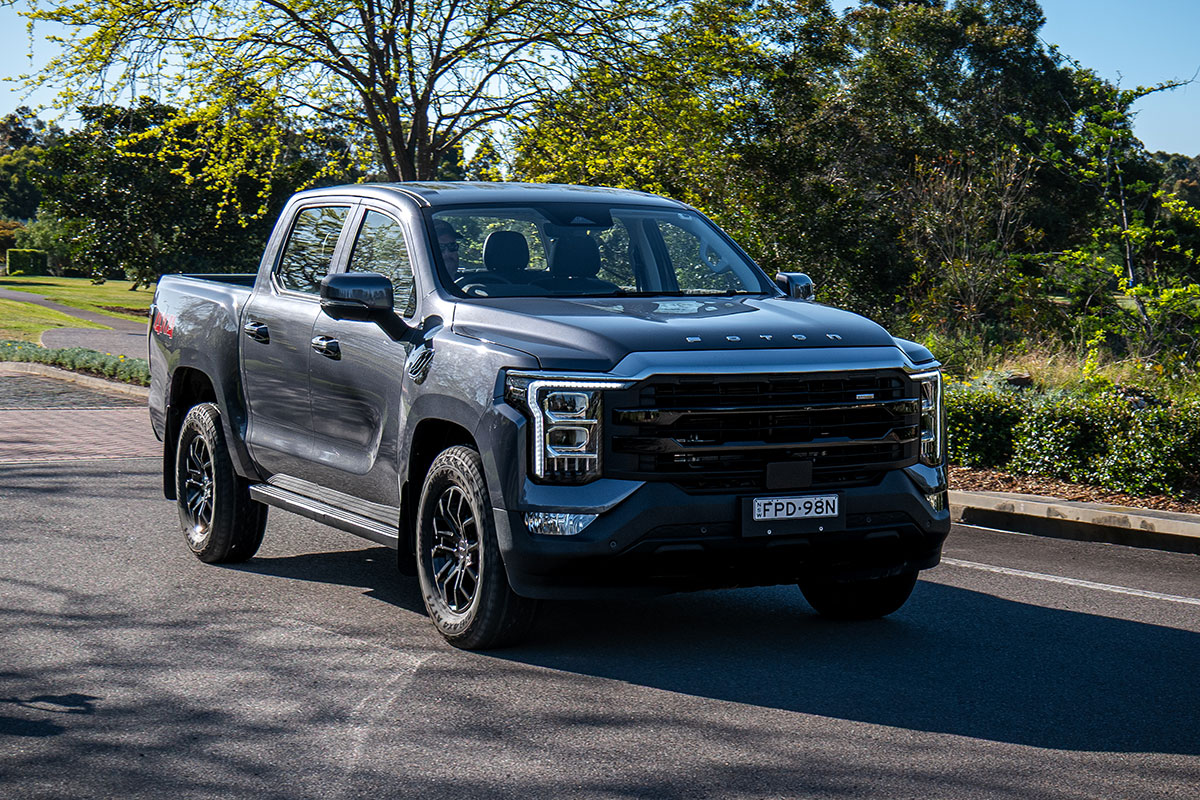
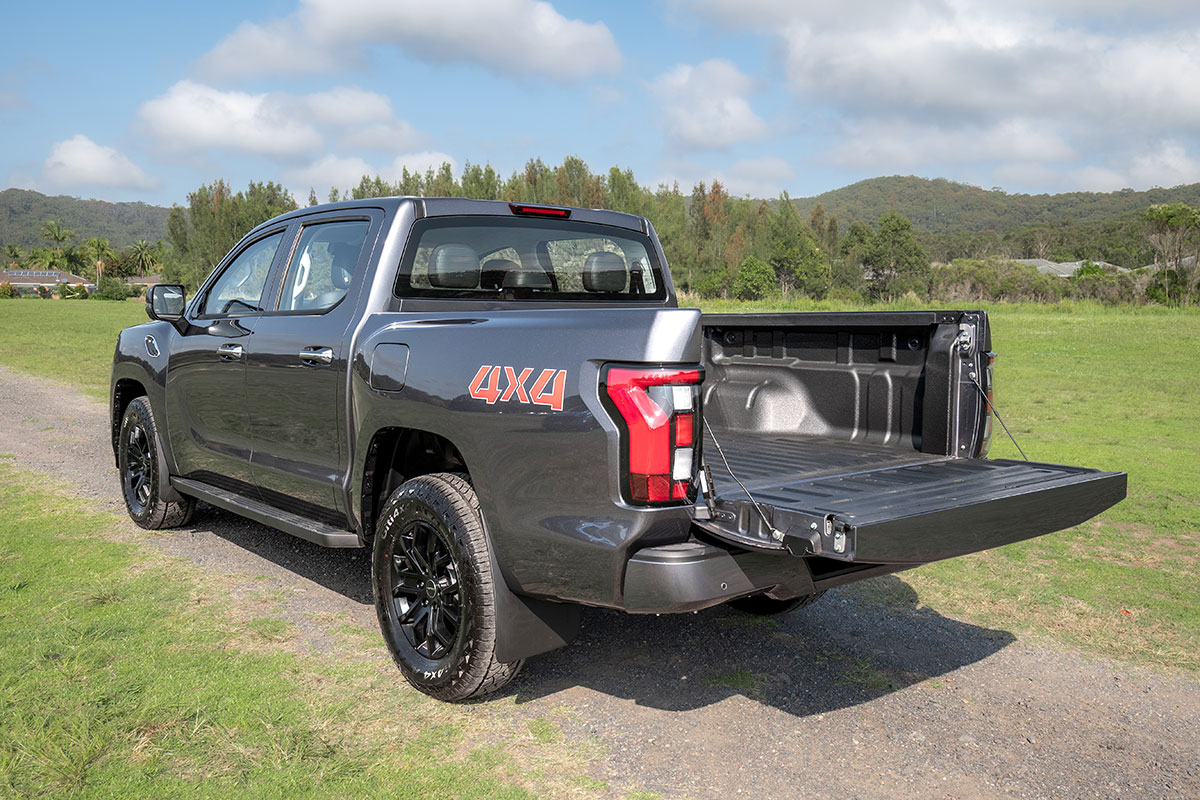
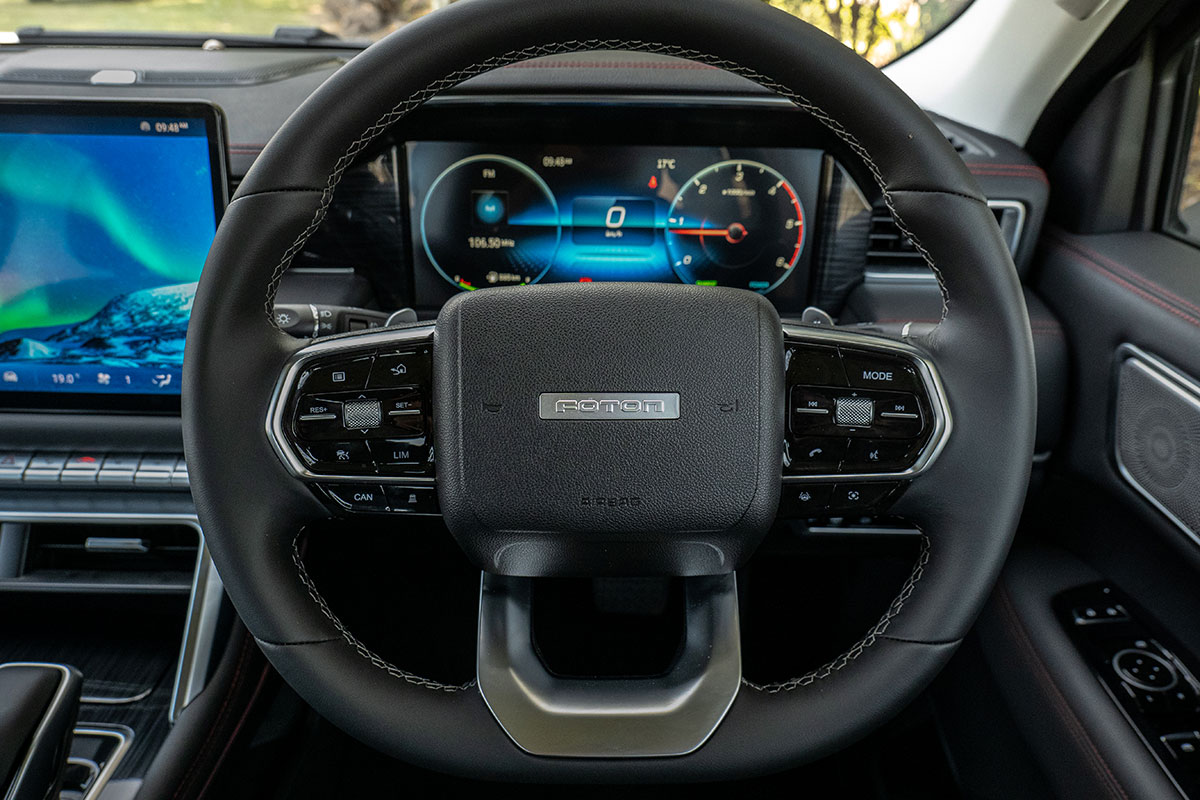
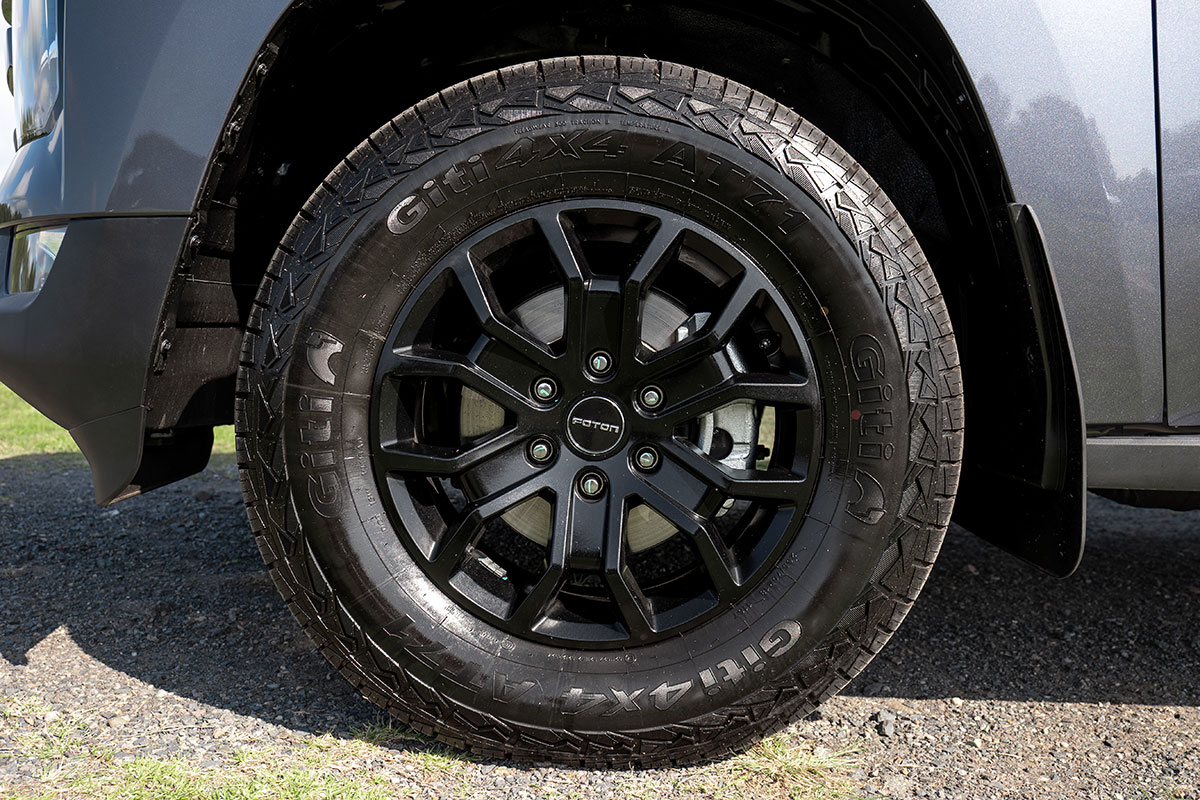
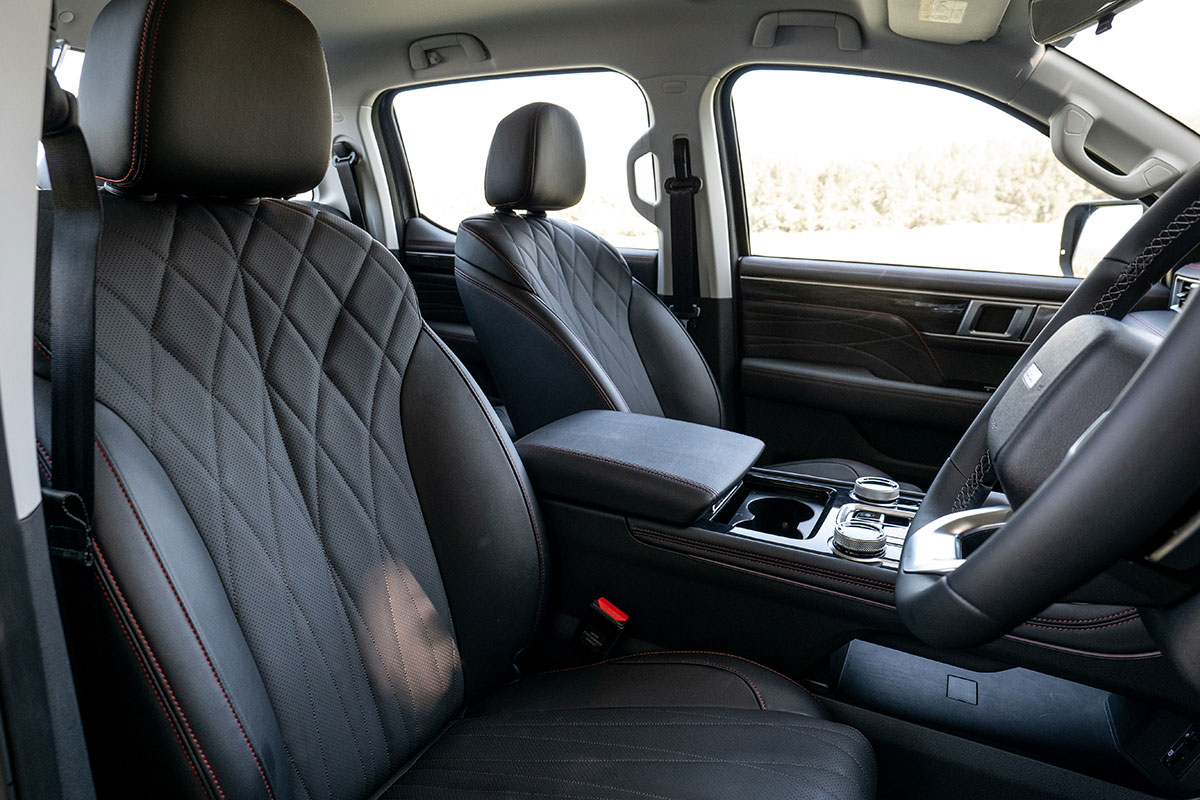

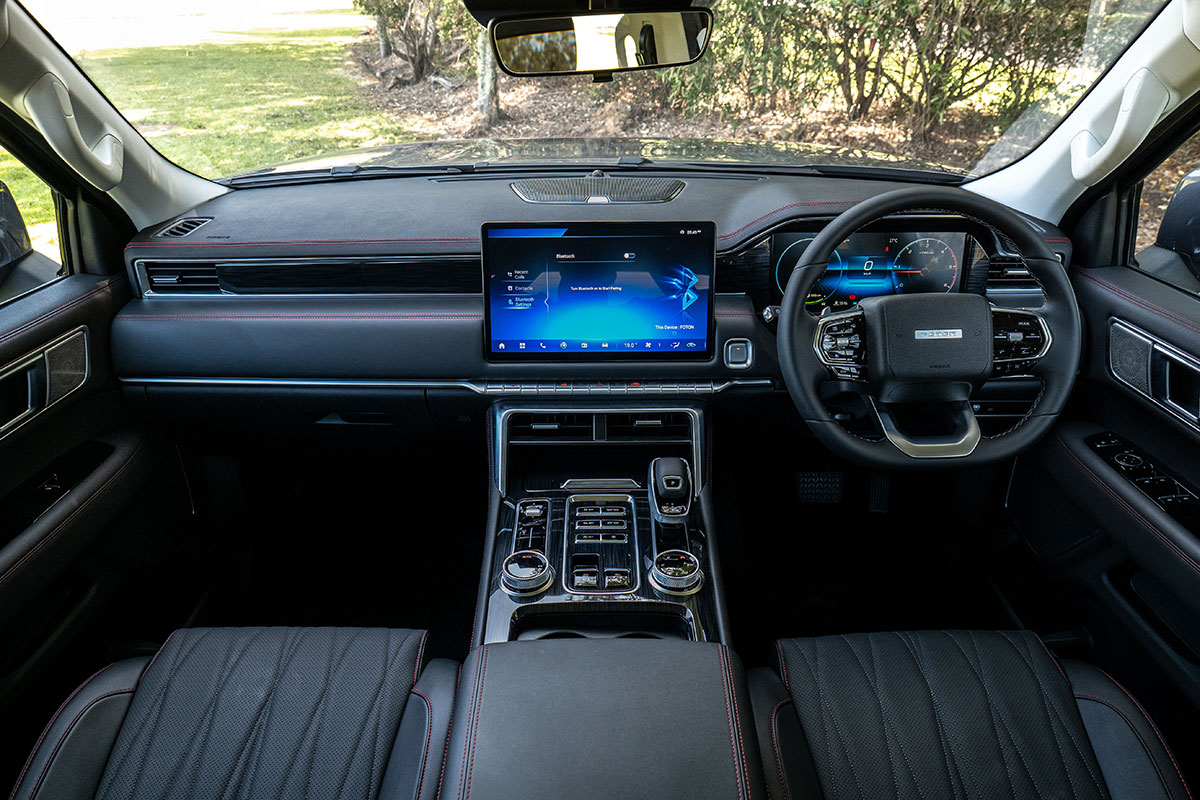
Standard equipment in the rear-wheel-drive V7-C 4x2 includes LED headlights, leather-like trim, a 360-degree camera with road-ahead view, dash cam, front and rear parking sensors, a 14.6-inch touchscreen, wireless Apple CarPlay/wired Android Auto, voice activation, adaptive cruise control, side steps and 18-inch alloy wheels (with a corresponding steel spare). But DAB+ digital radio is absent across the range.
A 4x4 system (with a locking rear differential, high/low gear ratios (2H/4Auto/4H/4L), off-road modes and all-terrain tyres) is optional on the V7-C.
Along with a multi-link rear suspension, the V9-L 4x4 adds dual-zone climate control, powered and heated front seats, folding/heated exterior mirrors, a wireless charger, six (rather than four) speaker audio, rear USB-A ports, a vehicle-to-load power socket, a sports bar, glossier alloys and a (key-only) lockable tailgate.
A panoramic sunroof, driver monitor, ventilated leather front seats with lumbar adjustment, heated rear seats, rear privacy glass, roof rails, a front diff lock are unique to the V9-S 4x4. Not bad for under $50k.
There is no ANCAP safety score for the Foton Tunland at this time. It does have an extensive list of advanced driver-assistance systems as standard, including autonomous emergency braking with cyclist and pedestrian detection, blind spot monitoring, rear cross traffic alert, lane-keeping assistance, traffic sign recognition, door-open warning and trailer stability assistance.
Additionally, the Tunland comes with eight airbags, including one between the front seats, a driver’s knee airbag and a full-length curtain airbag, a 360-degree surround-view camera with road-ahead view, Isofix anchorages, and a trio of tether points fitted to the rear seats.
Regardless of which look you choose, all Tunland grades are powered by a 2.0-litre four-cylinder turbo-diesel engine co-developed with Ricardo Engineering in the UK. This unit includes a 48-volt mild-hybrid set-up that is designed to increase torque in the lower-rev ranges.
The resulting outputs are 120kW of power at 3600rpm and 450Nm of torque from 1500rpm to 2400rpm. An eight-speed torque-converter automatic by German gearbox specialists ZF is the sole transmission on offer, meaning no manual is available.
In 2190kg V7-C 4x2 guise, the Tunland’s power-to-weight ratio is a modest 54.9kW/tonne, dropping to just 51.8kW/tonne in the 2315kg V9-S 4x4. In contrast, a Ranger 2.0-litre turbo-diesel 4x2 manages about 56kW/tonne, a Ranger 2.0-litre twin-turbo diesel is at around 68kW/tonne, and a Kia Tasman 2.2-litre turbo-diesel 4x2 achieves over 72kW/tonne.
Fitted with a stop/start system to help conserve fuel, this powertrain meets Euro-6 emissions requirements, and offers a combined average fuel consumption figure of 8.0L/100km, for a carbon dioxide emissions rating of 211 grams per kilometre.
Two of the Tunlands we drove during the launch program indicated between 10.3L/100km and 10.6L/100km.
Foton says the Tunland has undertaken about a year’s worth of Australian-road tuning, centred on the steering and suspension, but would not clarify what has been modified as a consequence.
After an extensive two-day drive route taking in quite challenging mountain roads as well as suburban motorways, three big things stand out.
Firstly, the Tunland’s 2.0-litre turbo-diesel deserves more firepower. As those power-to-weight ratio numbers suggest, it is a little on the weak side, meaning that off-the-line acceleration is leisurely. Only when on the move does the Foton feel sufficiently fast.
To its maker’s credit, on the other hand, the noise/vibration and harshness levels are commendably muted. This is a refined ute mechanically. Credit must also go to the auto, which shifts quickly and sweetly, for smooth driving.
Secondly, the Tunland is a delightful-handling ute. You read that correctly: the steering is beautifully weighted and even provides some feel and feedback to the driver. In the V9 grades especially, the ute can be cornered at speed accurately and with confidence. Yes, we’re shocked too.
Thirdly, and inevitably, the payoff for such agility is suspension that ranges from firm to hard. The leaf-sprung V7 is worse, with a choppy and at times uncomfortable ride that seems to rarely settle, except on the smoothest bitumen. We suspect this may also be behind the door-area squeaking, undermining an otherwise unexpectedly refined ute.
In comparison, the V9s (with coil springs in the back, remember) deal with bad roads better, but suspension is still noticeably firmer than ideal. And neither offers the suppleness of dynamically superior rivals like the Ranger.
To end on a positive note, the Tunland’s ADAS tech behaves considerably less intrusively than in many other utes, suggesting that Foton’s Australian tuning efforts are paying dividends.
The Foton Tunland is one of this year’s surprises – handsome (if brazenly derivative) styling, low pricing despite the larger-than-average packaging, a classy and mostly refined interior, and steering that might give Ford engineers sleepless nights.
Which makes the lack of muscle, sometimes punishing ride, rattly trim, recalcitrant touchscreen and minor specification anomalies all the more annoying, because this is a sizeable leap forward for cheap utes from China.
